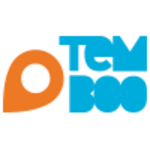Description

Bevywise IoT simulator

Bridgera IoT
Comprehensive Overview: Bevywise IoT simulator vs Bridgera IoT
Bevywise IoT Simulator
a) Primary Functions and Target Markets
Primary Functions:
- Device Simulation: Bevywise IoT Simulator is designed to simulate a large number of IoT devices and their interactions. It supports MQTT, HTTP, and CoAP protocols, allowing it to replicate real-world communication scenarios.
- Data Modeling: The simulator enables users to create custom models of IoT devices and sensors, allowing detailed testing and data generation that mimics actual device behavior.
- Load Testing and Scalability: It is used to conduct load tests on IoT platforms, helping businesses ensure their systems can handle the expected data traffic.
- Protocol Simulation: Offers support for simulating telemetry data via various IoT protocols, allowing developers to debug and optimize their IoT infrastructures.
Target Markets:
- Developers and Testers: Organizations that need to test IoT solutions before deployment.
- IoT Platform Providers: Companies offering IoT platforms can use the simulator for scalability testing.
- Research and Academia: Institutions focused on IoT research can benefit from the simulation for various studies and experiments.
b) Market Share and User Base
- Bevywise IoT Simulator does not explicitly disclose its market share. However, it is well-regarded in niche markets involving IoT testing and simulation due to its feature-rich platform and protocol support.
- Generally caters to tech-centric industries and companies involved heavily in IoT deployments and innovation.
c) Key Differentiating Factors
- Customizability: Offers a high degree of customization for simulating a wide range of device behaviors and scenarios.
- Multi-Protocol Support: Compared to some tools with limited protocol support, Bevywise provides robust multi-protocol capabilities.
- Integration with other Bevywise tools: Seamless integration with other Bevywise tools and analytics platforms for enhanced insights.
Bridgera IoT
a) Primary Functions and Target Markets
Primary Functions:
- Real-time Monitoring: Provides platforms for real-time monitoring and tracking IoT devices.
- Data Management: Focuses on collecting, processing, and storing IoT data efficiently.
- App Development Support: Offers tools for developing IoT applications with customizable dashboards and reports.
- Asset Management: Manages assets by providing insights into the operational data of devices, aiding predictive maintenance and efficiency improvements.
Target Markets:
- Industry-specific Solutions: Health, transportation, smart cities, and industrial sectors.
- Small to Medium Enterprises (SMEs): Businesses looking for tailored IoT solutions with end-to-end support.
- Enterprise Clients: Larger organizations requiring comprehensive IoT solutions for extensive data management needs.
b) Market Share and User Base
- Bridgera IoT is competitive in the IoT solutions market largely due to its tailored approach to industry-specific needs and its technological integration.
- While specific market share data might not be readily available, Bridgera's value proposition and broad applicability give it a significant presence in industries like healthcare and logistics.
c) Key Differentiating Factors
- Tailored IoT Solutions: Custom solutions designed specifically for different verticals, such as healthcare or transportation.
- End-to-End Platform: Provides complete, integrated solutions rather than focusing solely on simulation or data management.
- Focus on Application Development: Unlike Bevywise, Bridgera places a stronger emphasis on the development and deployment of IoT applications, complete with UI/UX design elements.
Comparison
- Market Focus: Bevywise is suited for developers and testers needing simulation capabilities, while Bridgera appeals to businesses needing comprehensive IoT solutions and application support.
- Product Specificity: Bevywise specializes in detailed device simulations, whereas Bridgera offers broader IoT management and application functionalities.
- User Base: Bevywise typically attracts tech entities and platform providers, while Bridgera serves more industry-focused clients with customizable solutions.
Contact Info

Year founded :
Not Available
Not Available
Not Available
Not Available
Not Available

Year founded :
Not Available
Not Available
Not Available
Not Available
Not Available
Feature Similarity Breakdown: Bevywise IoT simulator, Bridgera IoT
Comparing Bevywise IoT Simulator and Bridgera IoT involves examining their core features, user interfaces, and any unique characteristics they might have. Here's a breakdown:
a) Core Features in Common
Both Bevywise IoT Simulator and Bridgera IoT offer robust solutions for IoT application development and management. Common core features typically include:
-
Device Simulation: Both platforms allow users to simulate IoT devices for testing and development purposes. This includes generating virtual devices and creating various network conditions.
-
Data Analytics: They offer tools to analyze data collected from IoT devices. This includes basic analytics and reporting functionalities.
-
Connectivity: Both solutions support common IoT protocols such as MQTT, HTTP, and CoAP to ensure seamless communication between devices and applications.
-
Scalability: Designed to support a growing number of devices and data, both platforms aim for scalability to cater to larger IoT ecosystems.
-
Integration Capabilities: They can integrate with various third-party applications and services, essential for extending functionalities and enhancing workflow.
b) User Interfaces Comparison
The user interface of an IoT platform greatly impacts the user experience.
-
Bevywise IoT Simulator:
- The interface is generally designed to be intuitive and accessible, focusing on ease of use for developers and testers.
- It may include dashboards for monitoring simulated device data and additional modules for configuration and protocol management.
-
Bridgera IoT:
- Emphasizes customization and user-friendly design with a focus on providing a comprehensive overview of connected devices and systems.
- Features dashboards and visualizations that are designed for both technical and business users to interpret IoT data effectively.
c) Unique Features
Each platform may offer unique features that set them apart:
- Bevywise IoT Simulator:
- Specializes in advanced simulation capabilities, allowing users to model a wide range of IoT scenarios and device behavior with high accuracy.
- Offers extensive logging and debugging tools which are particularly useful for developers and testers working on IoT projects.
- Bridgera IoT:
- Often focuses more on real-time operational intelligence and can provide highly customizable IoT solutions tailored to business-specific needs.
- May include advanced data visualization tools and AI-driven analytics for predictive insights, enabling superior decision-making processes.
These features reflect their target audiences and the specific needs they aim to address within the IoT development landscape.
Features

Not Available

Not Available
Best Fit Use Cases: Bevywise IoT simulator, Bridgera IoT
Bevywise IoT Simulator
a) Best Fit Use Cases
Types of Businesses or Projects:
-
Product Development and Testing: Bevywise IoT Simulator is ideal for companies that are developing IoT devices or applications. It allows them to simulate different IoT devices and test their applications under various conditions without needing physical hardware.
-
Prototype and Demo Preparation: Startups and firms focused on IoT solutions for industries like smart homes, healthcare, or automotive can use the simulator to create quick prototypes or demos for stakeholders or client presentations.
-
Training and Education: Educational institutions and training centers can use Bevywise IoT Simulator to provide hands-on experience in IoT concepts without needing physical devices, making it easier to scale learning environments.
Scenarios:
-
Testing Scalability and Performance: Businesses can evaluate how their systems respond to thousands of IoT devices communicating simultaneously, which is particularly beneficial for companies planning to deploy large-scale IoT solutions.
-
Pre-Deployment Validation: Perfect for large enterprises or IoT service providers who need to validate their IoT infrastructure and ensure its readiness before deploying in real-world scenarios.
Bridgera IoT
b) Best Fit Use Cases
Types of Businesses or Projects:
-
End-to-End IoT Solutions: Companies needing comprehensive IoT solutions, from data collection and management to analytics, can benefit from Bridgera’s platform. It's suitable for medium to large enterprises across various industries.
-
Custom IoT Deployment: Businesses requiring customized IoT solutions, such as logistics, healthcare, or asset tracking, will find Bridgera IoT advantageous due to its flexibility and integrative capabilities.
Scenarios:
-
Real-Time Monitoring and Analytics: Projects requiring advanced analytics and real-time monitoring capabilities will prefer Bridgera IoT, as it offers strong backend support for processing and visualizing IoT data.
-
Multi-Platform Integration: Companies that need seamless integration of IoT data with existing ERP, CRM, or other enterprise systems can leverage Bridgera’s expertise in building interconnected IoT ecosystems.
Catering to Different Industry Verticals or Company Sizes
-
Bevywise IoT Simulator: Primarily targets small to medium-sized enterprises and startups in the early stages of IoT development. It is highly valued in educational settings and industries focusing on research and development, where experimentation and testing are crucial.
-
Bridgera IoT: Best suited for medium to large enterprises across a variety of industries, such as logistics, healthcare, manufacturing, and smart cities. It's designed to handle complex, large-scale IoT projects that require sophisticated data analytics and integration capabilities.
Both platforms serve essential roles in the IoT ecosystem, with Bevywise focusing on simulation and testing, while Bridgera emphasizes comprehensive, customizable solutions to manage and analyze IoT data in real-time.
Pricing

Pricing Not Available

Pricing Not Available
Metrics History
Metrics History
Comparing undefined across companies
Conclusion & Final Verdict: Bevywise IoT simulator vs Bridgera IoT
When evaluating Bevywise IoT Simulator and Bridgera IoT, it's essential to consider various factors such as functionality, ease of use, scalability, cost, and user support. Below is a comprehensive conclusion that touches on these elements.
Conclusion and Final Verdict
a) Best Overall Value
Bevywise IoT Simulator tends to offer excellent value for businesses or individuals specifically focused on testing and developing IoT solutions. Its strength lies in simulating a wide range of IoT devices and environments which can be crucial for developers and testers.
Bridgera IoT, on the other hand, provides a more comprehensive IoT platform experience geared towards projects in need of not only simulation but also integration and operational deployment. It can deliver more value for enterprises looking to implement IoT solutions at scale.
In terms of overall value, Bridgera IoT may offer the best value for businesses seeking an end-to-end IoT solution beyond just simulation, while Bevywise IoT Simulator is better suited for those strictly interested in simulation capabilities.
b) Pros and Cons
Bevywise IoT Simulator
- Pros:
- Strong simulation capabilities with support for various protocols and devices.
- Cost-effective for testing environments.
- Easy integration with other development and testing tools.
- Cons:
- Limited in scope if looking for production deployment.
- May require more manual setup and management compared to full-suite platforms.
Bridgera IoT
-
Pros:
- Comprehensive IoT platform covering data integration, analytics, and deployment.
- Strong scalability options suited for enterprise-level IoT projects.
- Offers both managed services and platform as a service.
-
Cons:
- Higher cost could be prohibitive for smaller projects.
- May have a steeper learning curve for users seeking only basic simulation capabilities.
c) Specific Recommendations
-
For Developers/Testers: If your primary goal is to test and develop IoT solutions in a cost-effective manner, the Bevywise IoT Simulator is a strong candidate, offering flexibility and robust simulation tools. It's best suited for environments where the primary need is development and testing rather than live deployment.
-
For Enterprises/Businesses: If your need goes beyond testing and you are looking to integrate IoT into your business operations with scalability and support in mind, Bridgera IoT is advisable. It provides a holistic approach to IoT from simulation to real-world application.
-
Hybrid Approach: For organizations that require both strong simulation capabilities and a robust platform for deployment, considering a hybrid approach or integration of both tools might yield the best results. This can mean utilizing Bevywise for initial testing and Bridgera for production-level solutions.
Ultimately, the decision depends on the specific needs of the project, including budget constraints, the scope of the IoT implementation, and the level of support and scalability required. Evaluating these priorities will lead to choosing the right tool tailored to your organization’s needs.
Add to compare
Add similar companies



